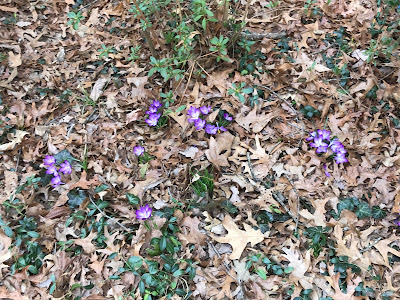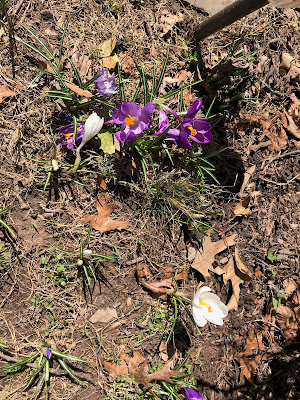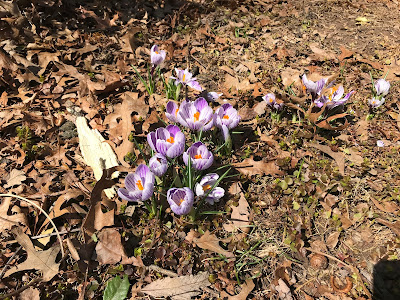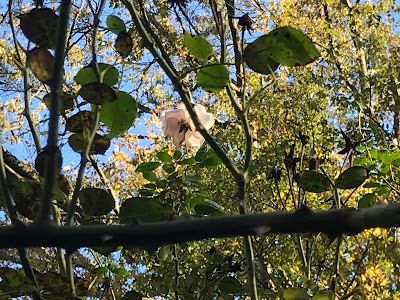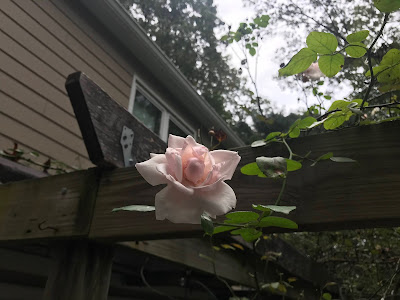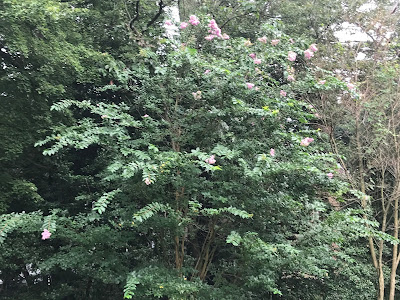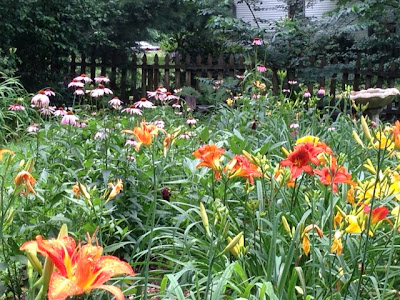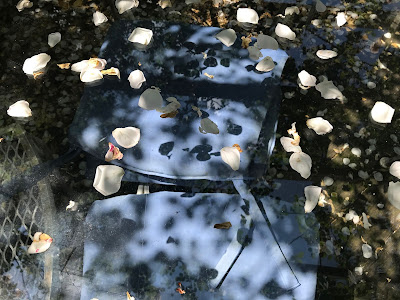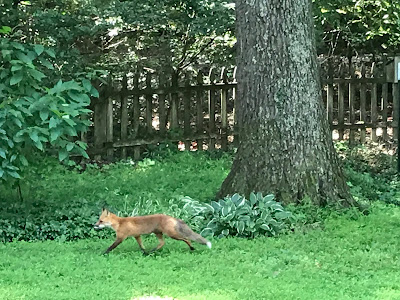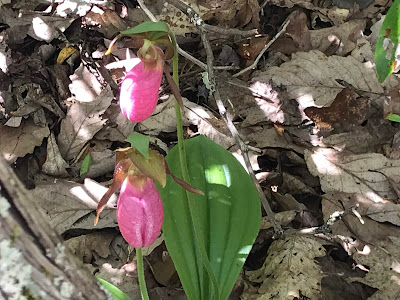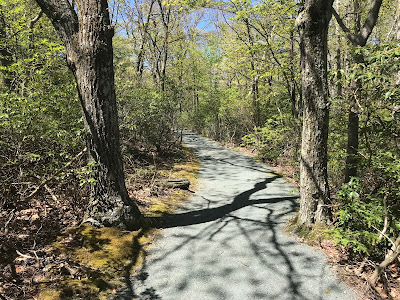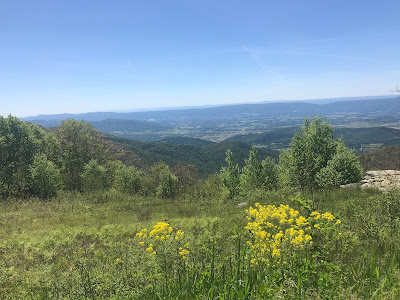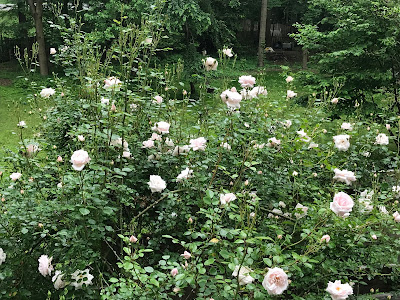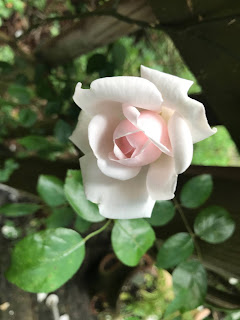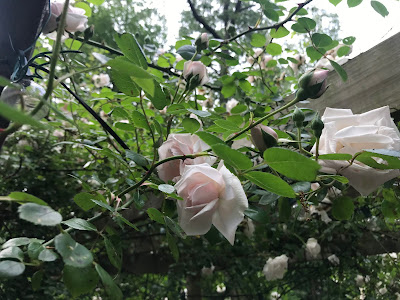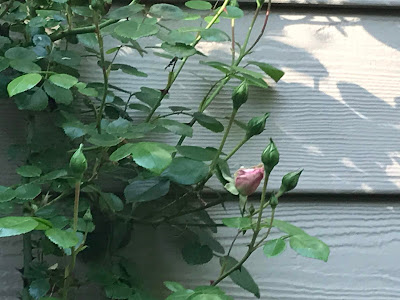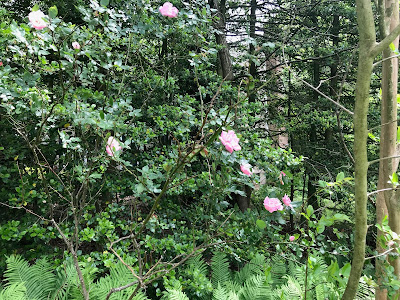Since mid-June I’ve been in fighting mode. The day lilies were budding and the deer were biting — and I was determined to win the battle this time. Armed with both liquid and granular deer repellent, I spent time each evening treating the flowers, dousing them with so much foul-smelling stuff that I dared any young buck to come near them.
But the young bucks did — and the young does, too. Apparently they were hungrier or more numerous than usual, because, despite all my efforts, the deer have decimated my day lily crop. The brilliant yellow and orange accents to the pink coneflowers … are not there. It’s a sparser and more monochromatic garden than I had anticipated this spring.
It’s easy for me to be discouraged by such matters, as seemingly trivial as they are. But I realized yesterday that I was looking at it all wrong. I was gazing at the garden and seeing what was not there rather than what is.
So I shifted focus. I skimmed over the stripped stalks, the nubs left by the marauding hordes. Instead, I appreciated the coneflowers, the pink ones and the white ones. I spotted the black-eyed Susans that are just beginning to pop. I took a couple of deep breaths and almost — almost — saw the beauty … in what remains.
(The garden a few years ago, when the day lilies still had a fighting chance.)
